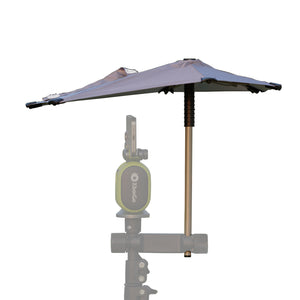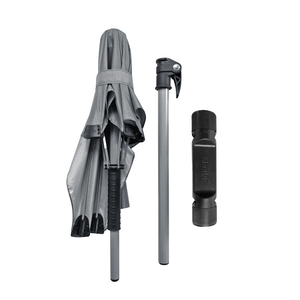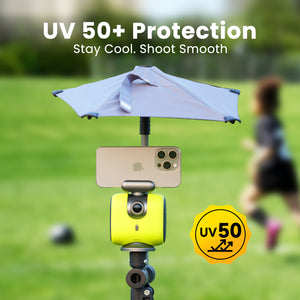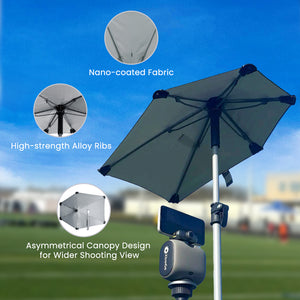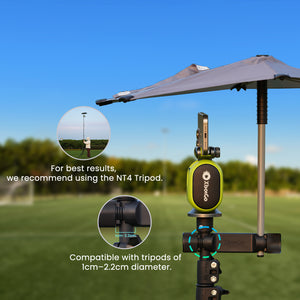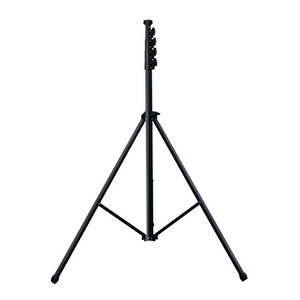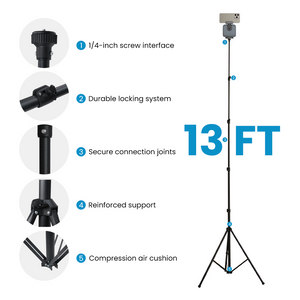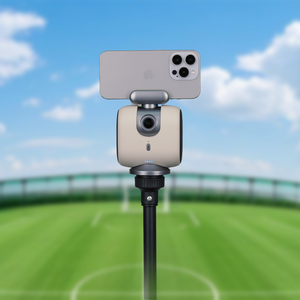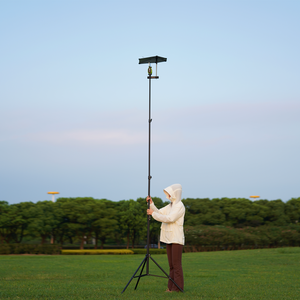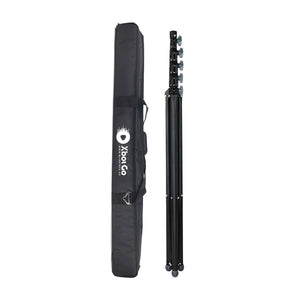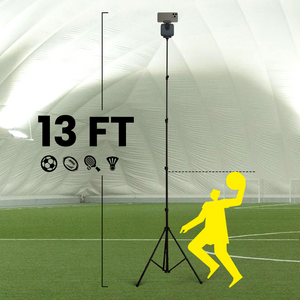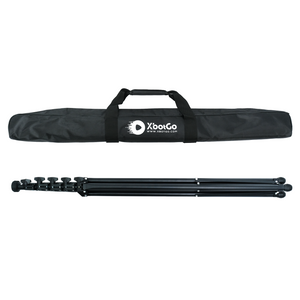XbotGo Chameleon AI Sports Camera
Hockeyschläger-Kurventabelle: Wähle dein perfektes Kellenprofil 2025
Wenn Sie schon einmal in einem Eishockeygeschäft vor Reihen von Schlägern mit kryptischen Codes wie P92, P88 oder P28 gestanden haben, sind Sie nicht allein. Diese scheinbar zufälligen Buchstaben und Zahlen bergen das Geheimnis für Ihre beste Leistung auf dem Eis – die Kurve Ihres Hockeyschlägers.
Warum die Wahl Ihrer Kurve wichtiger ist, als Sie denken
Die Krümmung der Kelle deines Hockeyschlägers ist nicht nur eine Frage des Stils – sie ist ein entscheidender Leistungsfaktor, der jeden Puckkontakt beeinflusst . Die richtige Krümmung kann deinen Handgelenkschuss von unpräzise zu präzise verwandeln, während die falsche dazu führen kann, dass du gegen deine Ausrüstung ankämpfst, anstatt das Spiel zu dominieren.
Betrachten Sie die Krümmung Ihres Schlägerblatts wie die Wahl eines Golfschlägers. Genauso wie Sie keinen Putter für den Abschlag verwenden würden, eignen sich verschiedene Krümmungen beim Hockey für unterschiedliche Aspekte des Spiels. Das Verständnis dieser Unterschiede könnte der entscheidende Durchbruch für Ihr Spiel sein.
Die Hockeyschlägerkurve entschlüsselt: Was diese Diagramme wirklich bedeuten
Die Krümmung eines Hockeyschlägers weist vier Hauptmerkmale auf, die zusammenwirken, um jedem Schläger seine einzigartige Persönlichkeit zu verleihen.
Kurvenlage: Wo die Magie geschieht
Die Lage der Krümmung Ihres Sägeblatts beeinflusst dessen Leistung grundlegend:
Fersenkrümmungen biegen sich nahe der Kelle und erzeugen einen großen Sweetspot, der sich perfekt für wuchtige Schlagschüsse eignet. Diese Krümmungsform bietet Verteidigern die nötige Hebelwirkung für kraftvolle Befreiungsschläge und präzise lange Pässe.
Bei Mid Curves befindet sich die Biegung in der Mitte der Kelle, was eine sogenannte „hervorragende Vielseitigkeit“ bietet. Diese Profile vereinen Puckkontrolle und Schusskraft und sind somit ideal für Spieler, die ein bisschen von allem können.
Toe Curves konzentrieren die Biegung an der Schlägerspitze. Sie eignen sich ideal für schnelle Spielzüge und erfreuen sich zunehmender Beliebtheit bei talentierten Stürmern, die gerne mit der Spitze des Schlägers spielen und schnelle Pässe werfen.
Gesichtswinkel: Ihre Höhenkontrolle
Der Winkel der Schlagfläche bestimmt, wie leicht man den Puck anheben kann:
- Geschlossene Schlagfläche : Hält die Schläge flach und kraftvoll, hervorragend für Rückhände geeignet.
- Leicht offen : Ausgewogene Leistung für die meisten Situationen
- Offenes Deck : Ermöglicht mühelose Treffer ins obere Eck, kann aber bei Unachtsamkeit zu Fehlschüssen führen.
Kurventiefe: Den optimalen Punkt finden
Zulässige Kurvenlagen reichen von 3/8" bis 3/4". Manche betonen, dass stärkere Kurven zwar mehr Kontrolle bieten, Rückhandschläge aber deutlich erschweren – für Anfänger definitiv nicht empfehlenswert.
Klingenlänge und Zehenform
Kurze Schlägerblätter sind in engen Räumen von Vorteil, während längere Schlägerblätter mehr Oberfläche für Pässe bieten. Runde Spitzen fühlen sich beim Stockhandling natürlich an, eckige Spitzen hingegen verschaffen Vorteile bei Zweikämpfen an der Bande und beim Blocken.
Die drei wichtigsten Kurven: Die beliebtesten Kurven erklärt
Nach der Auswertung des Feedbacks von Tausenden von Spielern und Ausrüstungsexperten dominieren drei Kurven konstant das Eis.
P92/P29/W03: Die Wahl des Volkes
Diese mittelhohe Kurve mit offener Schlagfläche hat sich aus gutem Grund zum beliebtesten Schuhmuster im Eishockey entwickelt. Sie verzeiht kleinere technische Fehler und ermöglicht gleichzeitig anspruchsvolle Spielzüge.
Warum Spieler es lieben:
- Großer Sweetspot für Ablenkungen und Tip-Ins
- Die offene Puckfläche hilft dabei, den Puck anzuheben, ohne ihn zu überfordern.
- Vielseitig genug für jede Position und jeden Spielstil
- Erhältlich bei allen großen Herstellern
Ideal für: Anfänger, vielseitige Stürmer, alle, die einen Schläger suchen, der alles kann
Achtung: Manche Spieler finden es bei präzisen Zehenzügen weniger effektiv als bei speziellen Zehenkurven.
P88: Der zuverlässige Leistungsträger
Der P88 verkörpert die ausgewogenste Kurvenlage im Eishockey und genießt daher die uneingeschränkte Treue von Spielern, die Zuverlässigkeit über Effekthascherei stellen.
Aussage eines echten Hockeyspielers : „Ich benutze seit 5 Jahren eine P88 und versuche hier und da mal etwas anderes auszuprobieren, kehre aber immer wieder zurück, auch wenn mir die andere Kurve insgesamt besser gefallen hat.“
Technische Vorteile:
- Mehr Kontakt der Kufe mit dem Eis für eine gleichmäßigere Puckkontrolle
- Die leicht offene Schlagfläche sorgt für ein ausgewogenes Verhältnis zwischen Lift und Rückhandfähigkeit.
- Das Design mit mittlerer Kurve eignet sich hervorragend sowohl für Schüsse als auch für Pässe.
- Zwingt die Spieler, die richtige Technik zu entwickeln, anstatt sich auf extreme Kurven zu verlassen.
Ideal für: Zwei-Wege-Spieler, Verteidiger, alle, die Wert auf Konstanz legen.
P28: Das Geheimnis des Scharfschützen
Der P28 hat die Art und Weise, wie talentierte Spieler das Netz angreifen, revolutioniert, aber er hat eine ebenso steile Lernkurve wie seine Zehenbiegung.
Die Videoanalyse von Hockey Tutorial beschreibt es perfekt: „Man kann den Puck fast in die Ecken schaufeln... es ist sehr einfach, den Puck unter dem Tor durchzulassen und ihn senkrecht nach oben zu spielen.“
Leistungsprofil:
- Die extreme Zehenkrümmung ermöglicht blitzschnelle Freigaben
- Offene Visiere machen Schüsse ins obere Eck fast schon automatisch
- Hervorragend in Nahkampfmanövern im „Michigan“-Stil.
- Erfordert beträchtliche Geschicklichkeit, um effektiv kontrolliert zu werden
Ideal für: Fortgeschrittene Stürmer, Spieler, die den Puck mit der Spitze führen, Spezialisten für den Nahkampf.
Nicht geeignet für: Anfänger (ernsthaft, einige Nutzer warnen einhellig davor, mit P28 anzufangen)
Positionsbezogene Empfehlungen, die tatsächlich funktionieren
Ihre Position beeinflusst, welche Kurveneigenschaften für Ihr Spiel am wichtigsten sind.
Stürmer: Maximierung der Offensivkraft
Unterschiedliche Stürmerrollen profitieren von unterschiedlichen Kurven:
Spielmacher bevorzugen oft die Muster P88 oder PM9, da diese sowohl im Passspiel als auch im Schussspiel überzeugen. Ihre Ausgewogenheit hilft ihnen, sich jeder Situation anzupassen.
Power Forwards wählen typischerweise den P92/P29 aufgrund seiner Vielseitigkeit im Gedränge. Die größere Schlägerblattfläche hilft dabei, Zweikämpfe vor dem Tor zu gewinnen.
Scharfschützen greifen gerne zur P28, sobald sie die Grundlagen beherrschen. Die Möglichkeit, schnell zu feuern, ist für Spieler mit feinem Händchen unübertroffen.
Verteidiger: Kontrolle und Klarheit
Defensivspieler benötigen Kurven, die ihre besonderen Aufgaben unterstützen:
Offensive Verteidiger nutzen den P88 oft wegen seiner Ausgewogenheit zwischen Schüssen von der blauen Linie und Pässen in die Endzone. Der gleichmäßige Schlägerkontakt unterstützt defensive Spielzüge zwischen den Schlägern.
Defensivspieler, die sich auf die Abwehr konzentrieren, bevorzugen möglicherweise Fersenkurven oder P91A-Schussmuster für maximale Schusskraft bei Klärungsversuchen. Der größere Sweetspot nahe der Ferse erzeugt eine hohe Schussgeschwindigkeit bei Schlagschüssen.
Moderne Two-Way-Spieler wählen den P92 häufig aufgrund seiner Vielseitigkeit. Ob beim Angriff oder in der Zonenverteidigung – dieser Curveball meistert alles.
Markenübergreifende Verwirrung: Was passt wirklich zusammen?
Eine der größten Herausforderungen im Eishockey ist es, vergleichbare Kurven für verschiedene Marken zu verstehen. Marketingnamen sagen selten alles aus.
Wahre Entsprechungen (vom Spieler bestätigt):
- P92 (Bauer) = P29 (CCM) = W03 (Warrior) = T92 (True)
- P88 (Bauer) ≈ P88 (CCM) ≈ W88 (Warrior) ≈ T88 (True)
- P28 (Bauer) = P28 (CCM) = W28 (Warrior) = T28 (True)
Jemand versucht, diese Verwirrung durch die Schaffung universeller „Klingentyp“-Nummern zu lösen, obwohl die meisten Spieler immer noch auf Herstellercodes zurückgreifen.
Wichtig: Selbst „gleichwertige“ Kurven können sich aufgrund von Unterschieden in der Schlägerblattlänge, im Lie-Winkel und in der Konstruktion zwischen den Marken unterschiedlich anfühlen.
Intelligente Teststrategie: Finden Sie Ihre Kurve, ohne Ihr Budget zu sprengen
Um die ideale Krümmung zu finden, müssen Sie nicht Dutzende von Schlägern kaufen. Folgen Sie diesem bewährten Ansatz erfahrener Spieler.
Schritt 1: Schränken Sie Ihre Optionen ein
Basierend auf Ihrem Können und Ihrer Position:
- Anfänger: Testen Sie nur P88 und P92
- Mittelstufe: Probieren Sie Ihre aktuelle Kurvenfamilie plus eine Alternative.
- Fortgeschritten: Feinabstimmung innerhalb Ihres bevorzugten Kurventyps
Schritt 2: Wirtschaftlich testen
Die Hockey-Community gibt folgenden goldenen Rat : „Kauf dir zwei gebrauchte und probier sie aus. Wenn dir dann eins besser gefällt, kauf dir ein neues oder frag in deinem Team nach, ob jemand welche übrig hat.“
Weitere Testmöglichkeiten:
- Leihen Sie sich während des Trainings die Schläger Ihrer Teamkollegen aus.
- Besuchen Sie die Demo-Tage im Pro-Shop.
- Gebrauchte Sticks auf Online-Marktplätzen kaufen
- Nutzen Sie die Rückgabebestimmungen der Händler mit Bedacht.
Schritt 3: Reale Leistung verfolgen
Verlassen Sie sich nicht nur auf Ihr Gefühl – messen Sie die tatsächlichen Ergebnisse:
- Schussgenauigkeit aus verschiedenen Positionen
- Erfolgsquote bei Rückhandschlägen
- Puckkontrolle in engen Kurven
- Komfortniveau nach vollständigen Trainingseinheiten
Häufige Fehler, die Sie Ihre Ziele kosten
Vermeiden Sie diese Fallstricke bei der Kurvenauswahl, in die viele Spieler tappen.
Das Problem der "Profi-Kopie"
Nur weil Matthews P92 verwendet, heißt das nicht, dass du es auch tun solltest. Profispieler wählen ihre Kurven basierend auf ihrem über Jahrzehnte entwickelten, individuellen Spielstil. Dein Spiel erfordert wahrscheinlich andere Hilfsmittel.
Die Verfügbarkeitsrealität ignorieren
Exotische Kurven mögen verlockend erscheinen, aber viel Glück bei der Suche nach Ersatz. Bleiben Sie bei den drei Klassikern (P92, P88, P28), es sei denn, Sie haben Spaß an der Suche nach Ersatzteilen.
Der Mythos der „Maximumkurve“
Mehr Kurve bedeutet nicht automatisch bessere Leistung. Viele Spieler verbessern sich sogar, wenn sie von extremen zu moderaten Kurven wechseln, weil sie dann nicht mehr gegen ihre Ausrüstung ankämpfen müssen.
Kaufen ohne Testen
Online-Kurventabellen können das Gefühl eines Stickstocks in der Hand nicht ersetzen. Testen Sie daher immer, bevor Sie sich für ein neues Muster entscheiden.
Die endgültige Entscheidung treffen: Ein Entscheidungsrahmen
Ihre ideale Kurve hängt von drei Faktoren ab, die nur Sie selbst beurteilen können.
Aktuelles Kompetenzniveau
Anfänger sollten fehlerverzeihende Kurven (P88 oder P92) wählen, die kleinere technische Fehler nicht bestrafen. Diese Muster helfen dir, die richtige Technik zu erlernen.
Fortgeschrittene Spieler können freier experimentieren, sollten aber ständige Änderungen vermeiden. Bleiben Sie bei dem, was funktioniert, und verfeinern Sie Ihre Fähigkeiten.
Fortgeschrittene Spieler profitieren möglicherweise von speziellen Kurven, die ihren ausgefeilten Spielstil optimal unterstützen. Kleine Anpassungen auf diesem Niveau führen zu größeren Ergebnissen.
Priorität des Spielstils
Fragen Sie sich ehrlich:
- Soll ich schnelle oder kraftvolle Aufnahmen priorisieren?
- Fühle ich mich mit dem Puck auf der Vorhand wohler oder bin ich in beiden Richtungen gleich gut?
- Spiele ich eher auf engem Raum oder aus der Distanz?
Ihre Antworten deuten auf Ihre idealen Kurvenmerkmale hin.
Stellenanforderungen
Deine Rolle auf dem Eis sollte deine Wahl beeinflussen, aber nicht diktieren. Viele Stürmer lieben P88, und manche Verteidiger spielen mit P28 hervorragend. Regeln sind da, um gebrochen zu werden, wenn sie dein Spiel verbessern.
Das Fazit zu Klingenkrümmungen
Nach der Analyse tausender Spielererfahrungen und Expertenmeinungen kristallisiert sich eine Wahrheit klar heraus: Die beste Kurve ist diejenige, die sich in Ihren Händen natürlich anfühlt und Ihnen konstant dabei hilft, Spielzüge zu machen .
Für die meisten Spieler bedeutet das, mit P88 oder P92 zu beginnen und lange genug dabei zu bleiben, um deren Eigenschaften wirklich zu beherrschen. Diese vielseitigen Muster bilden die Grundlage für die Entwicklung umfassender Offensivfähigkeiten.
Denken Sie daran, dass Kurvenänderungen wie eine Umstellung Ihres Golfschwungs sind – sie beeinträchtigen Ihr Spiel vorübergehend, bevor sie es (hoffentlich) verbessern. Nehmen Sie Änderungen mit Bedacht vor, testen Sie gründlich und geben Sie sich Zeit, sich anzupassen.
Die Krümmung deiner Schlägerkelle mag wie ein kleines Detail erscheinen, beeinflusst aber jede Interaktion mit dem Puck auf dem Eis. Wähle sie mit Bedacht, trainiere regelmäßig und nutze die Krümmung, um dein volles Potenzial auszuschöpfen. Deine Teamkollegen (und deine Statistiken) werden es dir danken.
XbotGo Chameleon AI Sports Camera
Capture every moment with AI-powered tracking. Perfect for coaches, parents, and athletes who want seamless footage without manual filming.







 Soccer
Soccer Basketball
Basketball Ice Hockey
Ice Hockey Rugby
Rugby










